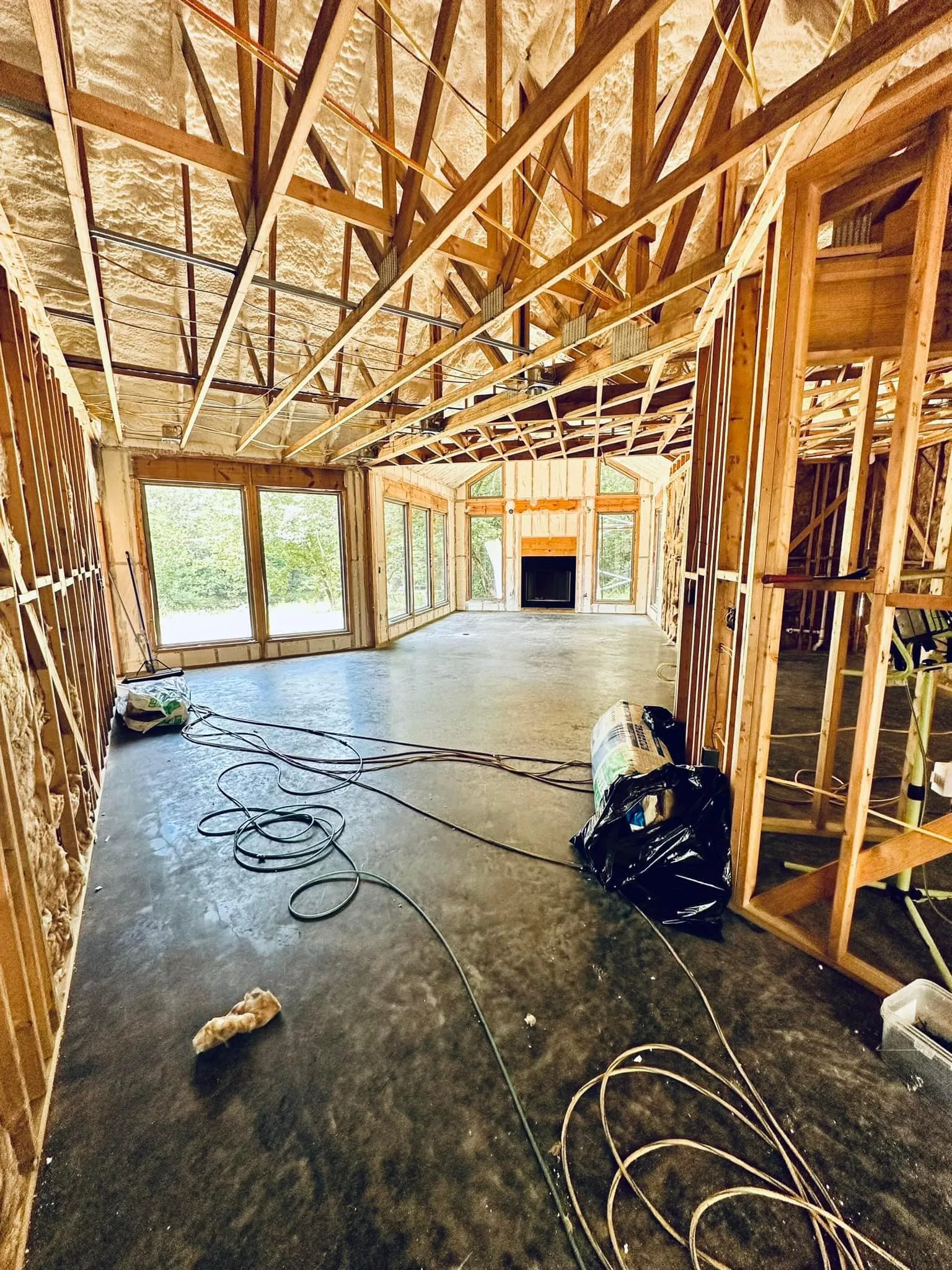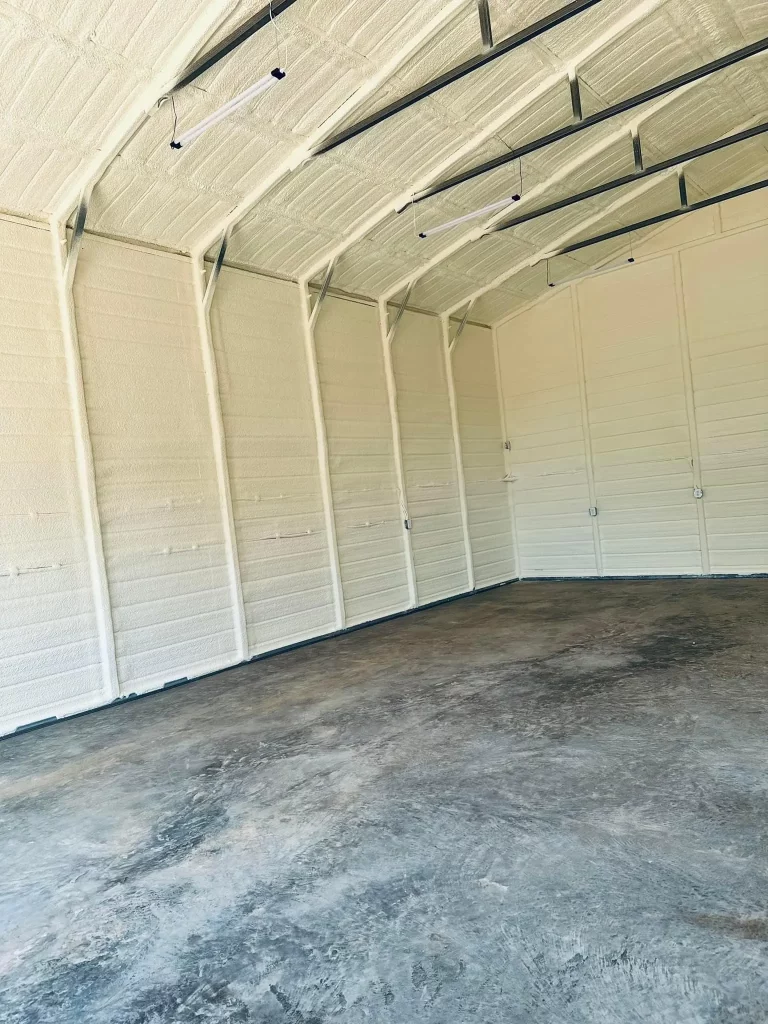
Spray foam insulation covers electrical wires and pipes completely during application, forming a tight seal that adds protection and boosts energy efficiency. Contractors spray the foam directly onto these elements in walls, attics, and crawl spaces, where it expands to fill gaps and create an air barrier. This process locks in wires and pipes without harming them if done right, but poor application can lead to overheating or moisture issues.
Homeowners often worry about hidden damage from insulation work. To alleviate these concerns, this article breaks down the full process, risks, and best practices to help you understand what occurs. Information here draws from years of hands-on projects installing spray foam in various buildings, offering reliable guidance based on real-world results.
Electricians and insulation teams work together to handle wires safely. Foam expands quickly after spraying, so professionals cover wires up to code limits. Open-cell foam, which is softer and more breathable, surrounds wires without trapping heat. Closed-cell foam, denser and water-resistant, provides stronger support but requires careful monitoring to prevent compression.
Wires stay functional because foam acts as an insulator, reducing energy loss. A study from the U.S. Department of Energy notes that spray foam can cut heating costs by up to 50% in attics, partly by protecting wiring from temperature swings. Still, excessive foam buildup might restrict air flow around wires, raising fire risks if not addressed.
Bonus Tip: Always check local building codes before starting. In humid regions like the Southeast, use open-cell foam around wires to allow moisture escape and avoid corrosion over time, as mentioned earlier.
Pipes face similar coverage during spray foam jobs. The foam adheres to metal or PVC surfaces, preventing condensation and freezing in cold climates. For plumbing lines, closed-cell foam excels by blocking water vapor, which helps in areas with high humidity.
Data from the Insulation Institute shows that proper pipe insulation with spray foam reduces energy use for hot water by 20-30%. While offering these benefits, however, if foam squeezes pipes too tightly during expansion, it could stress joints or lead to leaks. Teams often protect pipes with sleeves in advance to maintain flexibility.
In colder Northern states, this insulation keeps pipes from bursting during winter drops below freezing. Contractors apply foam in layers to control thickness and avoid over-pressurizing delicate systems.
Bonus Tip: Inspect pipes for existing damage first. Spray foam hides issues, so fixing leaks beforehand prevents bigger problems down the line.
Before spraying, clear the area around wires and pipes. Remove old insulation, seal gaps, and expose elements for even coverage. Electricians verify wire ratings match the foam type, ensuring no overload from added heat retention.
Teams use protective gear and ventilation to manage the chemical process. Market stats indicate that 70% of insulation failures stem from poor prep, per a report from Building Science Corporation. Taking time here saves costly repairs later.
For climate-specific advice, in dry Southwest areas, focus on dust control during prep to keep foam clean and effective.
Different materials handle wires and pipes in unique ways. The table below outlines key differences based on common applications.
| Insulation Type | Effect on Wires | Effect on Pipes | Energy Savings Potential | Cost per Square Foot |
|---|---|---|---|---|
| Spray Foam (Open-Cell) | Allows air flow, low heat buildup | Breathable, reduces condensation | Up to 40% | $1.00 – $1.50 |
| Spray Foam (Closed-Cell) | Strong seal, higher R-value | Water-resistant, prevents freezing | Up to 50% | $1.50 – $2.50 |
| Fiberglass Batts | Loose fit, easy access for repairs | Basic coverage, prone to moisture | 20-30% | $0.50 – $1.00 |
| Rigid Foam Boards | Minimal contact, good for exteriors | Solid barrier, but harder to install around curves | 30-40% | $0.80 – $1.20 |
This comparison highlights why spray foam often stands out for tight spaces, though it demands skilled application.
Evaluate your home’s age and layout first. Older buildings with knob-and-tube wiring need extra caution, as foam can trap heat and accelerate wear. Budget for inspections by certified pros to spot code mismatches.
Think about long-term maintenance. Foam lasts decades but makes accessing wires or pipes tougher, so plan for that in renovations. Climate plays a role too—opt for vapor-permeable options in wet areas to avoid mold growth.
Weigh energy bills against upfront costs. While spray foam runs higher initially, rebates from utilities can offset expenses, especially in energy-focused states.

It usually doesn’t, but it’s best to confirm with manufacturers, since some require specific installation methods to keep warranties valid.
Yes, but cutting out foam involves tools and dust, so it’s wise to design projects with any future needs in mind before installation.
Bonus Tip: Document the job with photos. This record helps during home sales or insurance claims, showing proper installation.
Spray foam encases electrical wires and pipes to improve insulation and durability, but success hinges on preparation and expert application. Risks like heat buildup or pipe stress drop with proper techniques. Review your setup, local rules, and climate needs to choose the best path forward. Assess specific conditions to match long-term energy goals and safety standards.
Homeowners facing wire and pipe concerns during insulation should seek detailed assessments. LMC Insulation offers consultations to review options without commitment. Reach out via email at [email protected] or call (479) 351-6175 to discuss your building’s details. This step ensures informed choices tailored to your space.
As noted in the electrical wires section, overheating is rare if applied correctly. Foam insulates but doesn’t conduct electricity. Pros leave space around hot wires to dissipate heat, following NEC guidelines that limit coverage to 50% of wire surface in some cases.
No, it protects them by stabilizing temperatures. In fact, it extends pipe life in extreme weather. Just ensure expansion doesn’t crack fittings—use tested products for this.
Yes, for safety. DIY kits exist, but handling chemicals and codes requires training to avoid hazards like off-gassing or uneven application.
In hot, dry zones, foam cures faster, so timing matters. Wet climates demand moisture barriers to prevent trapped water around pipes and wires.
Contact the installer immediately. Most jobs include warranties covering defects, but early detection of problems like bubbling foam saves structures from further harm.